MODEL NM100WH
Page 1
CAUTION
WARNING
TO REDUCE THE RISK OF FIRE, ELECTRIC SHOCK, OR
INJURY TO PERSONS, OBSERVE THE FOLLOWING:
1. Read all instructions carefully before installing or using the
NM100 System.
2. TheNM100mustbeinstalledbyaqualieddealerorinstaller,
and must conform to all local building and electrical codes.
3. Forcontinuedprotectionagainstriskofrereplacethefuse
inthepowerswitchmoduleonlywiththesametype3Amp,
250 Volt fuse.
4. Adhere to all warnings on the NM100 and in these instructions.
Follow all operating and installation instructions.
NM100 SERIES
SYSTEM INSTALLATION
READ AND SAVE THESE INSTRUCTIONS
THESE INSTALLATION INSTRUCTIONS ARE FOR USE BY
QUALIFIED PERSONNEL ONLY. TO REDUCE THE RISK OF
ELECTRIC SHOCK, DO NOT PERFORM ANY SERVICING
OTHER THAN THAT CONTAINED IN THE OPERATING
INSTRUCTIONS UNLESS YOU ARE QUALIFIED TO DO SO.
• Do not attempt to service the NM100 yourself as opening
or removing covers may expose you to dangerous voltage
or other hazards. Refer all servicing to qualied service
personnel.
The lightning ash with arrowhead symbol within an
equilateral triangle is intended to alert the user to the
presence of uninsulated “dangerous voltage” within the
product’s enclosure that may be of sufcient magnitude to
constitute a risk of shock to persons.
The exclamation point within an equilateral triangle is
intended to alert the user to the presence of important
operating and maintenance (servicing) instructions in the
literature accompanying the product.
• Locatethesystemawayfromheatsourcessuchasradiators,
heatregisters,stoves,orotherheatproducingproducts.
• Do not locate the NM100 master or remote stations in an
outside wall.
• Do not expose the NM100 to moisture. Doing so can create
reorshockhazardsandvoidthewarranty.
• Do not place the NM100 master or remote stations in any
wall cavity with any other electrical wiring in the cavity.
• Install the NM100 system after application of the wall covering
material.
• Do not expose the outdoor remote station speakers to
signicantwatercontact.Theoutdoorremotespeakersare
weatherproof but not waterproof. Continuous direct water
exposure will cause system problems.
• Do not connect a remote or door station wire if you are
unsure of its terminating point. Connecting a door station to
a remote station may result in system damage.
• Do ensure that all rough-in instructions have been followed
before power is applied to the NM100 system.
• Do not splice cables. Splices are unreliable and defeat the
signal isolation properties of the cable.
• Do not attach devices unauthorized for use with this system.
Authorized devices include:
Audio components connected via a line level input
NC300 6-disc player
• Ifextracableshavebeenrunforfuture speaker additions,
care must be taken to ensure these cables are not connected
to the NM100 master unit. Un-terminated cables (no station)
connected to the NM100 master may cause electrical
feedback that will damage the master station.
• Do not over-tighten the screws for the remote stations or
master as the plastic face panels may crack or strip out.
• Use only NuTone certied replacement parts and have
them installed by a NuTone dealer or installer. Unauthorized
substitutions can result in re, electric shock, or other
hazards.
• Upon completion of any service or product repair, have
the dealer or installer conduct a safety check to ensure the
system is in proper operating condition.
• Use only a damp cloth to clean the NM100 master and remote
stations. Do not use liquid cleaners or aerosol cleaners.
CAUTION: WIRING
• Aqualiedelectricianmustruna120VAClinetotheNM100
retrottransformers.
• Individual wire runs should not exceed more than 350 FEET
of wire from any single remote station to the NM100 master
or 1000 total feet for the entire system.
• Label all wiring runs. Connecting the wires to the NM100
master,remotestationordoorstationsincorrectlymayresult
in system damage.
• Run a single cable from the master unit location to each
remote station and door station in a “home run” fashion. Do
not loop cable from one remote station to another.
• Do not staple cables. Staples cause shorts.
• Do not splice cables. Splices are unreliable and defeat the
signal isolation properties of the cables.
• Do not run electrical wires through the rough-ins. If you
encounter 120VAC wires running through a rough-in during
a retrot you must have a qualied electrician rerun those
wires around the rough-in.
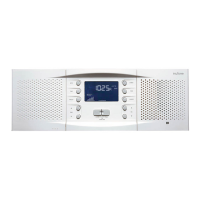
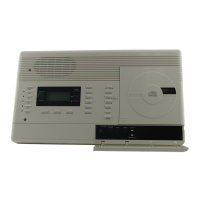
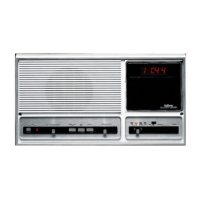




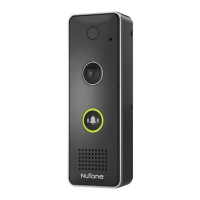
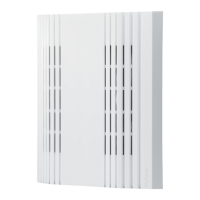
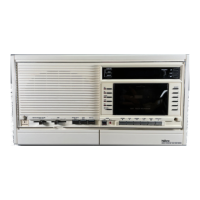


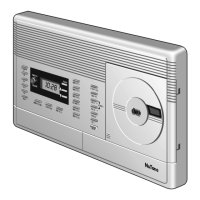
